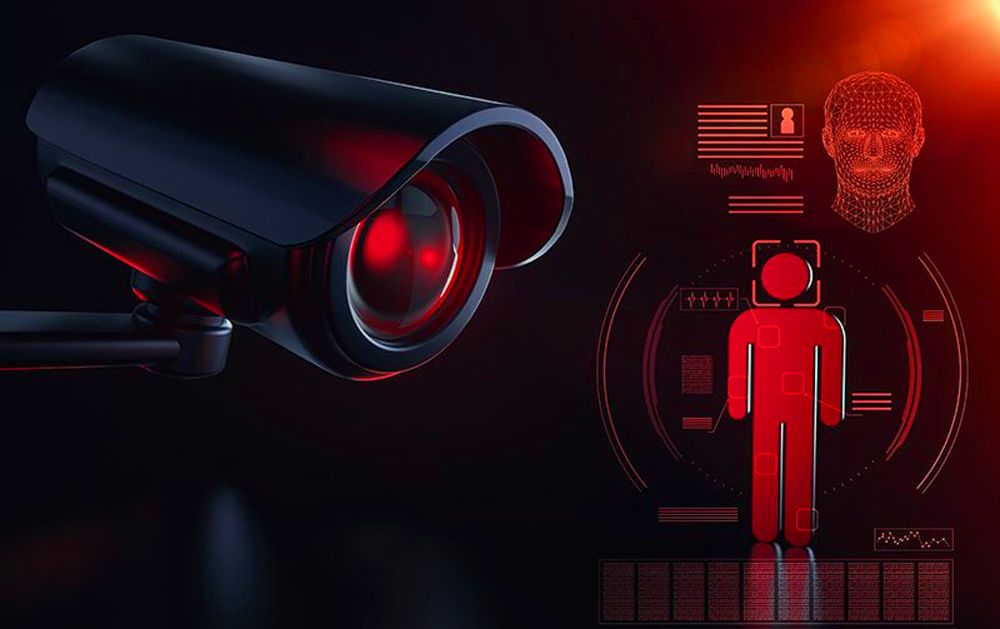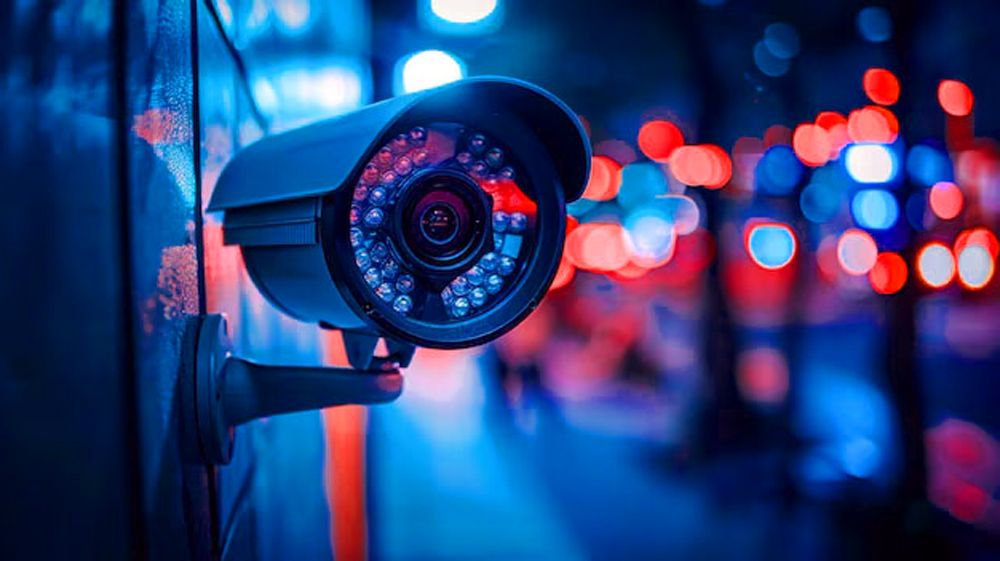In today’s digital age, technology is advancing at a rapid pace, and one of the most prominent trends is the development of Camera AI (Artificial Intelligence Camera). This technology not only changes how traditional cameras operate but also opens up new possibilities in areas such as security, surveillance, facial recognition, and applications in self-driving vehicles, healthcare, e-commerce, and more.
So, what exactly is a Camera AI, and what are its standout features? In this article, we will explore the smart camera technology in-depth, explaining its functionalities, applications, and how it is transforming industries.
What is Camera AI?
Camera AI also known as a smart camera, is a camera device that uses artificial intelligence (AI) to process images, analyze data, and make decisions autonomously, without human intervention. Camera AI technology enables the camera not only to capture images but also to recognize objects, classify images, understand context, and interpret behavior in the environment it is monitoring.
This offers several advantages over traditional cameras, which merely capture footage. With Camera AI, image processing and analysis occur in real-time, enhancing security, improving operational efficiency, and introducing new possibilities in various fields.
Common Types of Camera AI
Currently, this solution can be divided into several types based on their functions and applications, including:
- AI Security Camera: These use AI to recognize faces, detect motion, analyze abnormal behaviors, and automatically alert authorities in case of security breaches.
- Self-driving Car Camera: In autonomous vehicles helps detect objects, pedestrians, traffic signs, and other elements essential for safe driving.
- Facial Recognition Camera: These cameras detect and identify human faces, commonly used in security systems or access control.
- Smartphone Camera: Many modern smartphones come equipped with Camera AI capabilities to enhance image quality, recognize scenes, and automate processes like taking better pictures in low light.
- Camera AI in Healthcare: Used for analyzing medical images like X-rays or MRIs, Camera AI assists doctors in diagnosing medical conditions.

Key Features of Camera AI
1. Object and Facial Recognition
One of the most prominent features of a Camera AI is its ability to recognize and analyze objects, faces, and behaviors within its environment. For instance, in security systems, a Camera AI can identify individuals based on facial features, enabling the detection of intruders or unauthorized persons in a monitored area. This is especially useful in high-security locations like airports, banks, or public spaces.
Moreover, facial recognition technology can also enhance access control systems by automatically identifying authorized individuals and reducing the risk of security breaches.
2. Behavior Analysis and Anomaly Detection
Camera AI can be programmed to analyze human behavior or other objects in the field of view. For example, in a security setup, the camera can track the movement of people and detect unusual behaviors such as trespassing, entering restricted areas, or other suspicious actions.
Upon detecting abnormal behavior, the this service can trigger an alarm, send notifications to the system administrator, or even take automated actions like recording video, capturing images, or locking doors.
3. Automated Image Adjustments and Quality Enhancement
AI technology also helps smart cameras automatically adjust the image quality by optimizing factors such as brightness, contrast, and color. This feature allows the camera to capture clear images even in low light conditions or when photographing moving subjects.
In Camera AI, the system can detect the scene type (e.g., landscape, portrait) and automatically tweak settings to produce the best possible photo. For instance, in low light, the camera may increase the exposure time or adjust the ISO to produce brighter and clearer images.
4. Scene and Object Classification
Camera AI are equipped with the ability to classify and recognize various scenes and objects. For example, in surveillance systems, can categorize people, vehicles, animals, and other objects to focus on potential threats or unusual activities.
This capability helps reduce false alarms in security systems by ensuring that the camera only focuses on relevant subjects that may pose a risk or are of interest.
5. Text Recognition
Camera AI are also capable of recognizing and extracting text from images, which is particularly useful in applications such as traffic monitoring cameras or document scanning systems. For example, Camera AI can read vehicle license plates, identify signatures, or detect any textual information within documents, allowing for faster processing and record-keeping.

Applications of Camera AI in Real Life
1. Security and Surveillance
One of the most common applications of Camera AI is in security and surveillance systems. AI-powered cameras can process images in real-time and issue alerts when they detect abnormal activities, such as a person entering a restricted area or engaging in suspicious behavior. With facial recognition, can differentiate between authorized personnel and intruders, reducing false alarms and improving security monitoring efficiency.
2. Traffic Monitoring and Autonomous Vehicles
In the transportation sector, plays a crucial role in traffic monitoring and autonomous driving systems. In self-driving cars, helps detect surrounding objects like pedestrians, other vehicles, traffic signals, and obstacles, ensuring safe navigation on the road.
In traffic management, Camera AI can analyze vehicle flow, monitor traffic congestion, and even detect traffic violations, such as running red lights or speeding, enhancing public safety and improving traffic management systems.
3. Healthcare and Medical Imaging
Camera AI is revolutionizing the healthcare industry by assisting in the analysis of medical images, such as X-rays, MRIs, and CT scans. These cameras help doctors identify potential health issues like tumors, infections, or cardiovascular problems more accurately and quickly.
Camera AI-powered image recognition can also be used for screening and diagnostic purposes, aiding in early detection and improving the overall quality of patient care.
4. Retail and E-commerce
Camera AI is being increasingly used in retail and e-commerce environments to enhance customer experiences. For example, can track consumer behavior, analyze how customers move within a store, and provide personalized recommendations or promotions based on their actions. In e-commerce, Camera AI can assist in inventory management, product recognition, and customer interaction through virtual try-ons.
5. Enhancing User Experience in Smartphones
Many modern smartphones incorporate Camera AI to improve the quality of photos taken by users. These cameras use AI to optimize various settings, such as lighting and focus, making it easier to take professional-quality photos even in challenging conditions. Camera AI also helps enhance features like portrait mode (blurring backgrounds) and scene recognition, making the camera more intuitive and user-friendly.
How Camera AI is Changing the Future
1. Transforming the Security Industry
Camera AI is playing a transformative role in the security industry. By enabling real-time image analysis, these cameras make it possible to monitor large areas with minimal human intervention. The ability to automatically detect faces, recognize behaviors, and issue alerts drastically reduces response times in case of emergencies and improves security outcomes.
As AI technology continues to evolve, these cameras will become even more accurate, capable of distinguishing between different types of activities and behaviors, reducing false alarms, and providing more precise threat detection.
2. Advancements in Autonomous Vehicles
Camera AI is essential for the development of self-driving vehicles. These cameras enable autonomous vehicles to “see” and interpret the world around them, making decisions based on visual inputs. As Camera AI technology improves, self-driving cars will become safer and more reliable, reducing the likelihood of accidents caused by human error.
3. Improved Diagnostic Tools in Healthcare
In healthcare, will continue to enhance diagnostic accuracy and speed. By analyzing medical images with greater precision, AI can help doctors diagnose diseases earlier, improving patient outcomes. As Camera AI technology progresses, the medical imaging field will benefit from even more advanced systems that can detect subtle abnormalities and provide valuable insights to medical professionals.
4. Personalized Shopping and Retail Experiences
In the retail and e-commerce industries, Camera AI will make shopping experiences more personalized and seamless. By recognizing customer preferences and behavior, Camera AI can tailor product recommendations, making it easier for customers to find what they want and enjoy a more satisfying shopping experience.
5. Smart Homes and IoT Integration
As part of the Internet of Things (IoT) ecosystem, will be integrated into smart home systems. These cameras will not only enhance home security but also provide valuable insights into household activities. For example, Camera AI could detect unusual behavior in the home (such as falls by elderly family members) and automatically alert caregivers or family members.
Conclusion
Camera AI is rapidly becoming an essential part of various industries, from security and healthcare to retail and autonomous vehicles. With their ability to recognize faces, analyze behavior, optimize image quality, and enhance user experiences, offers significant advantages over traditional cameras.
As AI technology continues to advance, the capabilities of this service will expand, providing new opportunities and improving the way we interact with the world around us. Whether it’s for enhanced security, smarter shopping, or better healthcare, is helping to create a more efficient, safer, and connected future.
* Contact us:
- Email: dc@dcx.com.vn
- Phone: 0333361599
- Facebook: https://www.facebook.com/DCX.Tech.Solutions/
